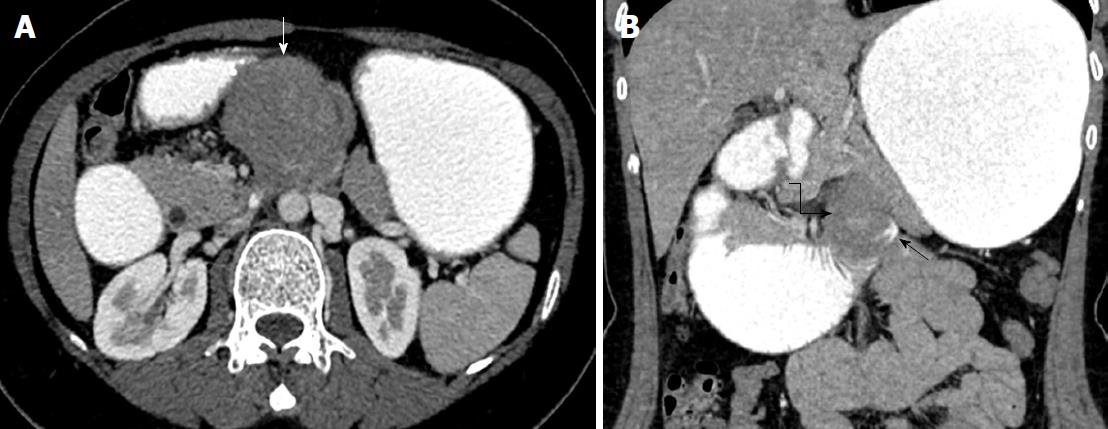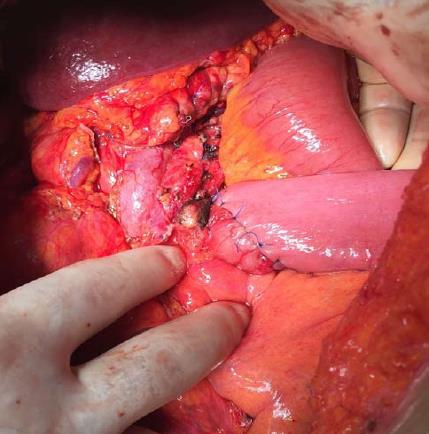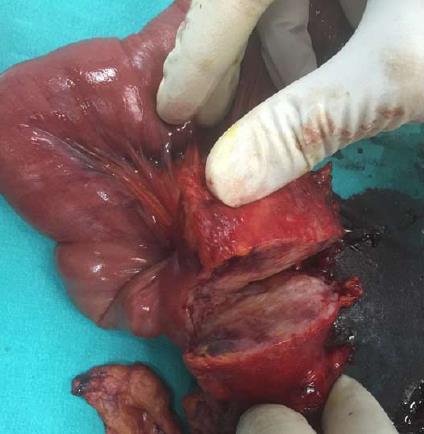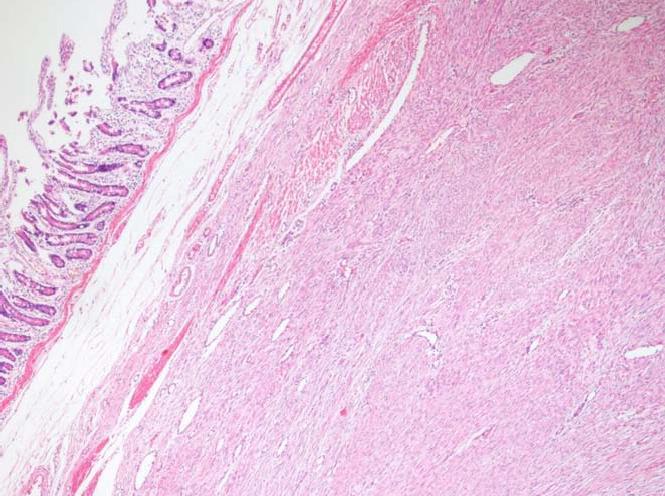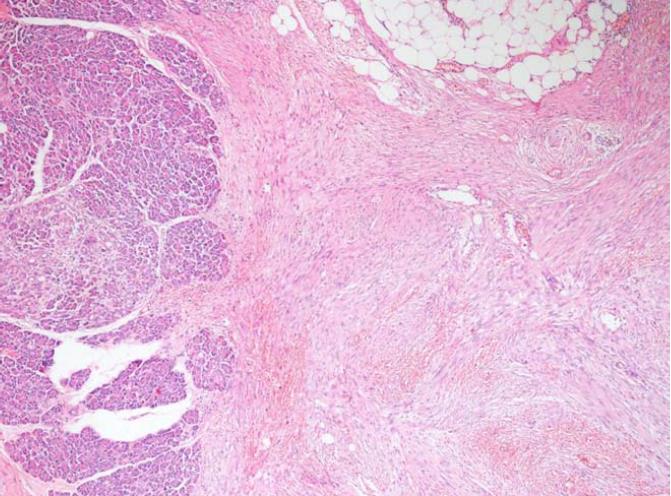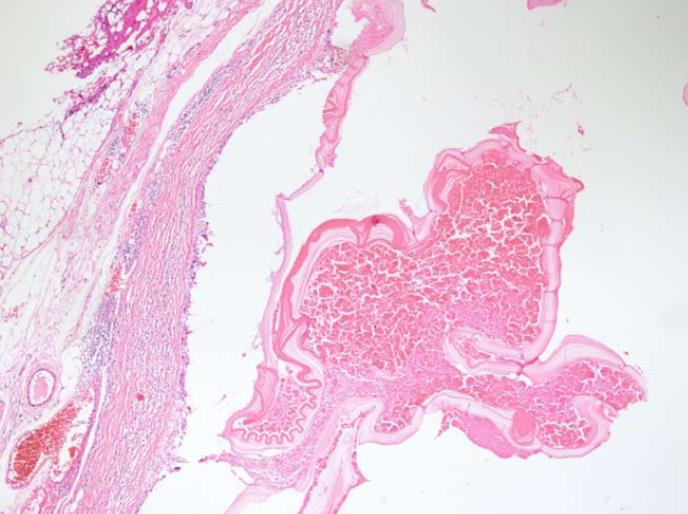Copyright
©The Author(s) 2018.
World J Gastrointest Surg. Nov 27, 2018; 10(8): 90-94
Published online Nov 27, 2018. doi: 10.4240/wjgs.v10.i8.90
Published online Nov 27, 2018. doi: 10.4240/wjgs.v10.i8.90
Figure 1 Oral and intravenous contrast-enhanced multidetector computed tomography.
A: Axial cross-sectional views of the multidetector computed tomography (MDCT) scan; B: Coronal reformant cross-sectional views of the MDCT scan. A space occupying mass lesion with homogenous density showing minimal contrast uptake is seen in the preaortic area in the abdominal midline (white arrow). Coronal reformant MDCT images show that the mass is in the fourth part of the duodenum (curved black arrow). There is only slight oral contrast passage to jejunal loops (thin black arrow), and the duodenum and stomach had a ptotic appearance due to mechanical obstruction caused by the mass.
Figure 2 Intraoperative views.
The image of the anastomosis formed with circular stapler between the third part of the duodenum and proximal jejunum after the resection. Circumferential serosal sutures with prolyene were placed to reinforce the anastomosis.
Figure 3 Appearance of back-table stage of surgery.
The resected specimen after the transection of the pancreas. It was seen that the mass originated from the duodenum and invaded pancreas.
Figure 4 Microscopic appearance of duodenal wall tissue stained with hematoxylin and eosin.
Spindle cell tumor originating from the muscularis propria under duodenal mucosa (HE × 40).
Figure 5 Microscopic appearance of pancreatic tissue stained with hematoxylin and eosin.
It shows extension to pancreatic parenchyma (HE × 40).
Figure 6 Microscopic appearance of the hydatid cyst tissue stained with hematoxylin and eosin.
An acellular membrane of a hydatid cyst is shown here (HE × 40).
- Citation: Akbulut S, Yilmaz M, Alan S, Kolu M, Karadag N. Coexistence of duodenum derived aggressive fibromatosis and paraduodenal hydatid cyst: A case report and review of literature. World J Gastrointest Surg 2018; 10(8): 90-94
- URL: https://www.wjgnet.com/1948-9366/full/v10/i8/90.htm
- DOI: https://dx.doi.org/10.4240/wjgs.v10.i8.90









